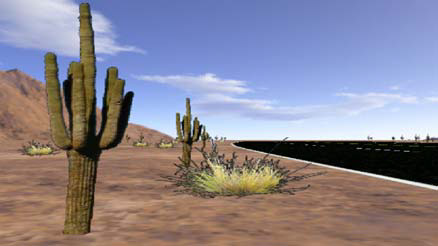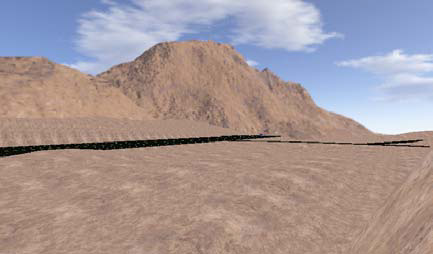“Use of splines in creating flexible virtual environments” by Oza and Mourant
Conference:
Type(s):
Title:
- Use of splines in creating flexible virtual environments
Presenter(s)/Author(s):
Abstract:
Three-dimensional virtual environments can be tedious to create and change. Road networks and their associated terrain can be particularly difficult to model and modify because they are often defined using static elements which must be changed manually. We have implemented a roadway/terrain system based on 3-D splines. The splines can be turned into ribbons that represent roadways [Willesmsen, 2000]. These ribbons can be annotated with lane markings and roadway signs. The terrain can be decorated with vegetation. Changing the positions of spline control points changes the entire environment. Ribbons are associated with the terrain by using a height map as described below.
References:
1. Wang, H., Kearney, J., Cremer, J., and Willemsen, P. 2005. Steering Behaviors for Autonomous Vehicles in Virtual Environments. IEEE Virtual Reality Conference, 155–162.
2. Willemesen, P. 2000. Behavior and Scenario Modeling for Real-Time Virtual Environments. Ph.D. thesis. University of Iowa.
3. Willemsen, P., Kearney J., and Wang H. 2003. Ribbon Networks for Modeling Navigable Paths of Autonomous Agents in Virtual Urban Environments. In IEEE Virtual Reality Conference. 79–86.






